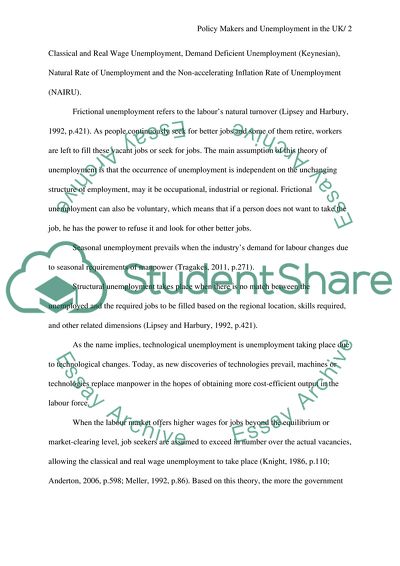Cite this document
(Should UK policy makers be concerned about unemployment persistence Essay - 1, n.d.)
Should UK policy makers be concerned about unemployment persistence Essay - 1. https://studentshare.org/macro-microeconomics/1813746-should-uk-policy-makers-be-concerned-about-unemployment-persistence-and-hysteresis-given-the-increase-in-the-unemployment-rate-since-the-start-of-the-recession-in-2008
Should UK policy makers be concerned about unemployment persistence Essay - 1. https://studentshare.org/macro-microeconomics/1813746-should-uk-policy-makers-be-concerned-about-unemployment-persistence-and-hysteresis-given-the-increase-in-the-unemployment-rate-since-the-start-of-the-recession-in-2008
(Should UK Policy Makers Be Concerned about Unemployment Persistence Essay - 1)
Should UK Policy Makers Be Concerned about Unemployment Persistence Essay - 1. https://studentshare.org/macro-microeconomics/1813746-should-uk-policy-makers-be-concerned-about-unemployment-persistence-and-hysteresis-given-the-increase-in-the-unemployment-rate-since-the-start-of-the-recession-in-2008.
Should UK Policy Makers Be Concerned about Unemployment Persistence Essay - 1. https://studentshare.org/macro-microeconomics/1813746-should-uk-policy-makers-be-concerned-about-unemployment-persistence-and-hysteresis-given-the-increase-in-the-unemployment-rate-since-the-start-of-the-recession-in-2008.
“Should UK Policy Makers Be Concerned about Unemployment Persistence Essay - 1”. https://studentshare.org/macro-microeconomics/1813746-should-uk-policy-makers-be-concerned-about-unemployment-persistence-and-hysteresis-given-the-increase-in-the-unemployment-rate-since-the-start-of-the-recession-in-2008.


